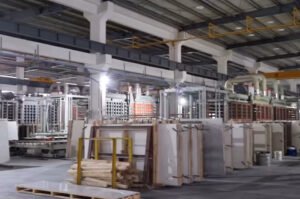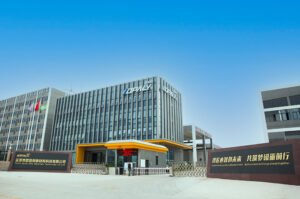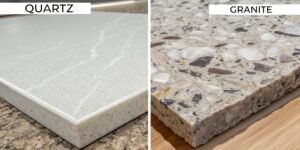Based on available information and industry trends, here are the top 10 artificial quartz stone manufacturers in China for 2025. These companies are recognized for their production capacity, product quality, innovation, and global reach. Please note that rankings may vary depending on specific criteria such as market share, customer satisfaction, or technological advancements, and the market is dynamic, with new players potentially emerging over time.
-
Oppein Stone
Known for its diverse range of quartz slabs suitable for various applications, including kitchen countertops and bathroom vanities. Oppein Stone offers a vast selection of colors and grain styles, catering to different aesthetic preferences. -
UMGG Stone
Recognized as a National High-Tech Enterprise, UMGG leverages advanced production lines to deliver high-quality quartz products. It’s a trusted name in the industry, offering a wide range of quartz solutions. -
Sinostone
A premium-quality quartz pioneer, Sinostone provides over 100 colors and large-format slabs. It has a strong presence in global markets, collaborating with renowned firms in kitchen, bath, and project design sectors. -
Vemy Quartz Surface
An innovation leader in China's engineered stone industry, Vemy produces quartz surfaces with superior durability and antibacterial properties, composed of 93% quartzite and 7% natural resin. -
Summerly Quartz
Offers an extensive catalog of quartz stone surfaces with strong production capabilities and global logistics support. Summerly is noted for its modern factory and outstanding global service. -
YW Quartz
Provides a variety of quartz products, including slabs, countertops, and vanity tops, with customizable options. YW Quartz is praised for its durability and wide selection of colors and styles. -
SRS
Specializes in artificial quartz and offers a broad range of natural and artificial stones, including granite, marble, and quartzite. SRS is known for its competitive pricing and quality products. -
Enming Stone
Supplies a wide range of artificial stones, including quartz, with a focus on commercial and residential projects. Enming Stone also offers products like sintered stone and terrazzo. -
MXM Quartz Technology
Known for affordable artificial quartz slabs and surfaces, MXM serves various markets, including North America, South America, and Europe, making it a cost-effective option. -
Opaly Quartz
A leading manufacturer with a strong reputation in China and globally, Opaly offers a wide range of quartz products, including slabs, countertops, and sinks, with a commitment to high quality and excellent service.
Considerations
These manufacturers stand out due to their strengths in areas like production capacity, innovation, and global reach. When choosing a manufacturer, consider your specific needs—such as design preferences, project scale, or budget—as these factors may influence which company best suits your requirements. The artificial quartz stone industry in China is highly competitive and evolving, so staying updated on market trends is recommended.
What Are the Trends and Market Dynamics in the Artificial Quartz Stone Industry?
Is the rapidly changing quartz market making it hard to plan your procurement strategy? Making the wrong choice based on outdated information can hurt your projects. Let me guide you with my firsthand experience.
The artificial quartz stone industry is growing fast, driven by demand for durable and beautiful surfaces. Key trends include realistic marble looks, sustainable manufacturing, technological innovation in new patterns, and a rising demand for custom solutions. These dynamics are creating a very competitive and innovative market.
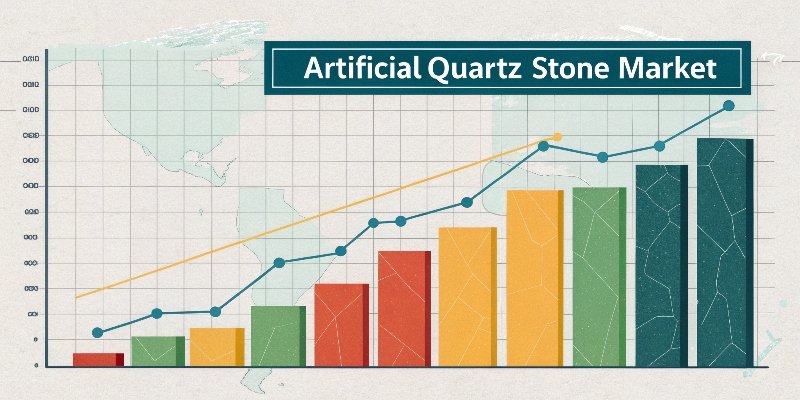
I have watched this market evolve for over a decade. It is not just about knowing what is popular, but understanding why. From my position as a manufacturer, I can see the forces driving change, from new technologies in our factories to shifting demands from clients worldwide. Understanding these dynamics is crucial for a procurement manager like you to make smart, forward-thinking decisions that protect your projects and budget. Let's break down the most important questions I get asked every day.
What is the price trend for artificial quartz stone in China by 2025?
Planning your budget is tough when prices are unpredictable. You need to avoid unexpected cost increases that can ruin a project's profitability. Here is my analysis on where prices are heading.
Prices for artificial quartz stone from China are expected to remain stable with a slight upward trend by 2025. While growing capacity helps control costs, rising demand, higher raw material quality, and new technologies for premium designs will prevent significant price drops. Expect steady, predictable pricing.
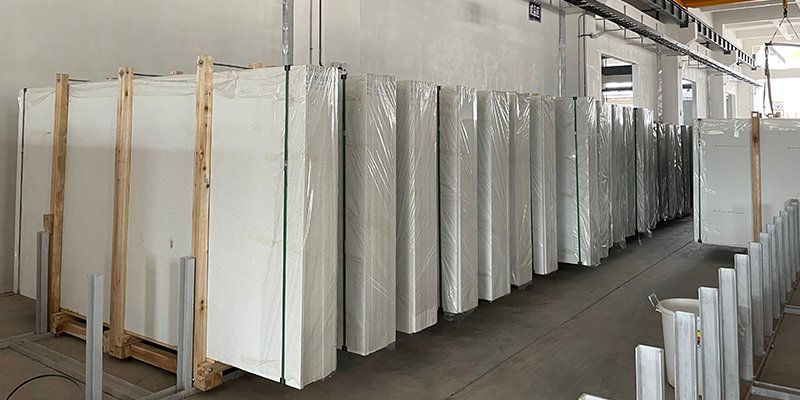
As a manufacturer based in China, I have a direct view of the factors that influence pricing. My forecast is based on a balance of competing forces. On one hand, the market is very competitive, but on the other, the cost of producing high-quality material is rising.
Factors Supporting Price Stability
The global market is growing at a strong pace, projected at a 6% compound annual growth rate (CAGR). This high demand is being met by very strong production capacity here in the Asia-Pacific region, which holds the largest market share. The landscape is filled with competitive key players like Oppein, Sinostone, and my own company. This level of competition prevents any single manufacturer from raising prices too aggressively. For standard designs and colors, this means you can expect prices to remain relatively stable.
Factors Pushing Prices Up
At the same time, we face challenges. The "High Processing Costs" mentioned in industry reports are real. The energy, high-purity raw materials, and advanced machinery needed to produce top-tier quartz are expensive. Furthermore, the trend is moving away from simple patterns toward complex, high-end solutions like intricate marble looks. These require more research, development, and a more artistic manufacturing process, which naturally increases the cost. Also, as clients demand more sustainable and eco-friendly practices, we are investing in methods that sometimes have a higher initial cost.
| Factor | Impact on Price | Explanation |
|---|---|---|
| Market Competition | Stable | Many strong manufacturers keep prices competitive. |
| High Demand | Upward | Strong global demand supports current price levels. |
| Innovation Cost | Upward | R&D for new, realistic designs costs more. |
| Raw Material Quality | Upward | Higher quality, premium designs require more expensive materials. |
My prediction is that base-grade quartz will stay steady, while premium and custom designs will see slight, justified price increases.
How to Choose the Right Quartz Stone Manufacturer?
Finding a trustworthy quartz manufacturer can be overwhelming. Choosing poorly leads to quality issues, missed deadlines, and endless project headaches. Let me share my checklist for finding a partner you can count on.
To choose the right manufacturer, evaluate more than just price. Look for consistent quality control, investment in R&D for new designs, proven production capacity to handle your volume, and transparent communication. A true partner invests in these areas to ensure your success.
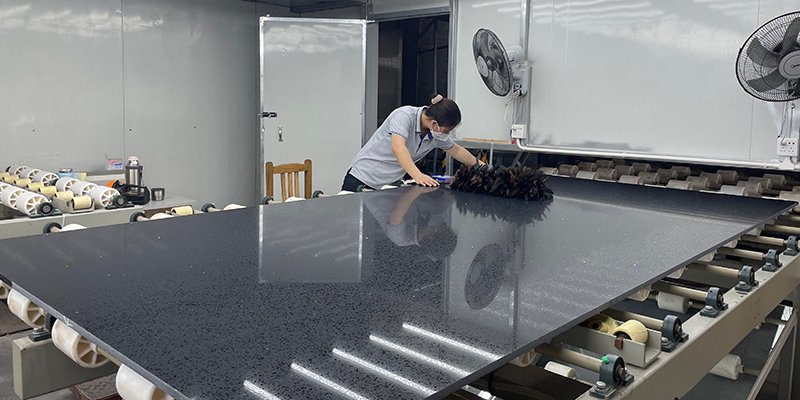
Over the years, I have seen many procurement managers get burned by choosing a supplier based on the lowest price alone. A reliable partner is an asset that saves you money in the long run. The industry has well-known names like Vemy Quartz and Summerly Quartz, but even when dealing with big players, you need to look deeper.
Production Capacity and Consistency
First, a manufacturer must be able to handle your volume without sacrificing quality. Ask them about their production lines and capacity. More importantly, ask how they ensure the hundredth slab looks exactly like the first sample you approved. A good partner has strict processes to maintain color and pattern consistency across different batches, which is critical for large projects.
Commitment to Innovation
Second, look at their product catalog. Do they only offer basic, speckled colors, or are they investing in the latest trends? A manufacturer that develops new, high-end solutions like realistic Calacatta and Carrara designs shows they are forward-thinking and committed to the industry. Their investment in R&D is a sign of a healthy, growing company.
Quality Control and Certifications
Third, do not be afraid to ask for proof of quality. What is their internal quality control process? Do they hold international certifications like ISO 9001 for quality management or NSF for food safety? A willingness to share this information shows transparency and confidence in their product.
Communication and After-Sales Support
Finally, how do they communicate? A good partner is easy to reach, provides clear updates, and is responsive when problems arise. Your relationship should not end once the container ships. A true partner stands by their product and supports you if any issues come up.
Why Do Manufacturers Offer Customizable Quartz Options?
Standard quartz designs can feel limiting for unique projects. You need to stand out from your competitors to win bids for high-end developments. Let me explain why custom options are becoming a key industry trend.
Manufacturers offer customization to meet growing demand from architects and designers for unique surfaces. It allows them to secure high-end commercial and residential projects by providing specific colors or patterns, creating a significant competitive advantage over those offering only standard products.
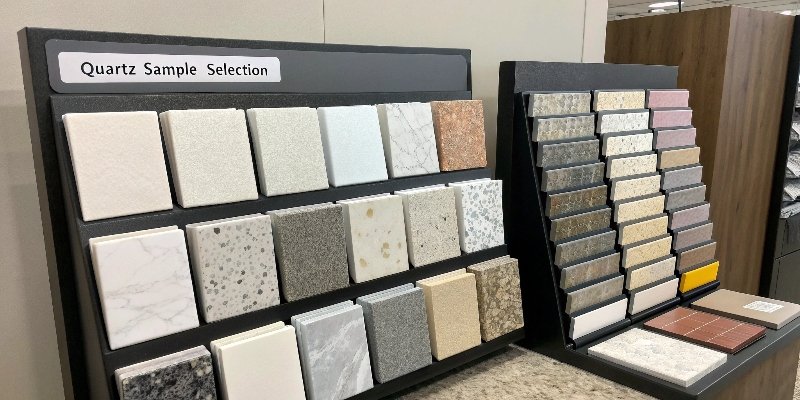
From my factory floor, I can tell you that the demand for customization is one of the biggest shifts in our industry. For years, the model was simple: we manufactured a set catalog of designs, and clients chose from it. Now, the conversation is changing, and we are embracing it as a way to build stronger partnerships.
Meeting the Demand for Personalization
The end-user, whether a homeowner or a hotel guest, wants a unique space. This trend is driven by architects and interior designers who are tasked with creating one-of-a-kind environments. For a hotel chain, this could mean a countertop color that perfectly matches their branding. For a luxury apartment building, it could mean a unique vein pattern that no other building has. If we, as manufacturers, cannot meet this need, we risk becoming irrelevant.
A Powerful Competitive Advantage
In a market with so many strong players, offering customization is a way for a manufacturer to stand out. It proves our technical capability. It shows that we are flexible and customer-focused. When I work with a procurement manager to develop a custom slab for their project, it builds a deep and lasting partnership. We recently did this for a large commercial project in the Middle East that required a specific sandy beige with fine white veins. Providing this custom solution secured the entire contract for us against competitors who could only offer standard options.
What is the difference between cheap and expensive quartz?
Cheap quartz can seem like a great deal for your project's budget. But poor quality can lead to costly failures and angry clients down the road. I will show you what a higher price really buys.
Expensive quartz uses purer quartz crystals, higher-grade resins, and more complex, artistic designs with greater depth. The price also reflects a rigorous quality control process that ensures consistency, durability, and a flawless polish, which cheaper alternatives often lack.

This is the most important question for any procurement manager. The price difference on an invoice can be significant, but the difference in real-world performance is even bigger. As a manufacturer, I know exactly where the extra cost goes, and it is all about ensuring long-term quality.
Raw Material Quality
The number one difference is the raw materials. To get a brilliant white background for a Calacatta look, we must use the highest purity quartz crystals, which are more expensive. A cheaper factory will use lower-grade quartz, which results in a dull, greyish, or yellowish background. The polymer resin is also critical. We use premium resins that are UV-stable to prevent yellowing over time. Cheaper products often use low-grade resins that can discolor in just a few years.
Design Complexity and R&D
A simple, uniform speckled pattern is easy and cheap to produce. A realistic marble design with deep, flowing, multi-tonal veins requires a significant investment in research and development and a much more complex, multi-layered manufacturing process. That R&D and artistry is a real cost reflected in the price.
Manufacturing and Quality Control
Finally, the process matters. Our factory uses extreme pressure to create dense, non-porous slabs that are highly stain-resistant. Cheaper factories may use less pressure, leading to more porous slabs. The polishing process is also key. A high-quality polish requires multiple stages with fine diamond abrasives, resulting in a deep, lasting shine. A cheap product will have a superficial polish that dulls quickly.
| Feature | Expensive Quartz | Cheap Quartz |
|---|---|---|
| Quartz Purity | High-purity, bright white crystals | Lower-grade, often grey or yellow-tinted |
| Resin Quality | Premium, UV-stable, non-yellowing | Cheaper resin, prone to discoloration |
| Design | Complex, deep, multi-layered veins | Simple, flat, surface-level patterns |
| Porosity | Very low, highly stain-resistant | Higher, more susceptible to staining |
| Polish | Deep, durable, multi-stage polish | Superficial polish that dulls quickly |
Ultimately, the higher price buys you peace of mind and protects your client's investment.
Conclusion
The quartz market is full of innovation. Understanding trends in price, quality, and customization helps you choose the right manufacturing partner and ensures your long-term project success and profitability.



